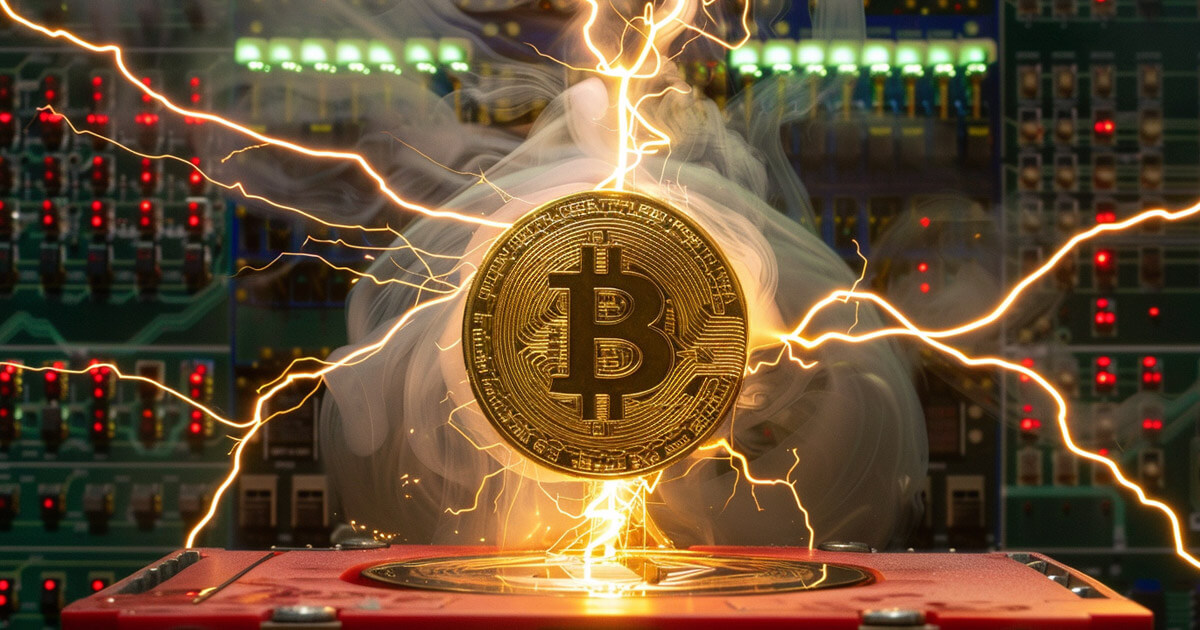Power Law predicts Bitcoin block rewards to hit $5.5 million within 10 years

Bitcoin block rewards will likely evolve significantly over the coming decade, driven by substantial shifts in Bitcoin prices and fee changes. One popular model for projecting future prices is the Power Law, coined by Giovanni Santostasi. Based on this model, CryptoSlate has calculated the Bitcoin block reward over the next ten years.
The Power Law Model predicts Bitcoin trading within a set range, illustrated on the left of the table below by the upper and lower bound prices, with the regression fit aligning with a ‘fair price.’ The right-hand columns show the Bitcoin block reward based on these prices, considering future Bitcoin halvings.
YearUpper Bound Price ($)Fair Price ($)Lower Bound Price ($)Block Reward Upper ($)Block Reward Fair ($)Block Reward Lower ($)2024274,54869,10024,517857,965215,90376,6172025379,955100,80535,7671,187,362315,017111,7722026515,561143,72550,9951,611,130449,143159,3622027684,305199,73470,8682,138,456624,170221,4642028897,270273,66397,0991,401,985427,598151,71820291,163,524370,148131,3331,818,008578,357205,20920301,491,596494,028175,2872,330,620771,920273,88720311,884,046648,109229,9582,943,8231,012,671359,31020322,369,328845,919300,1433,702,0761,321,749468,97420332,901,3801,070,486379,8224,533,4061,672,634593,47320343,579,9731,366,669484,9125,593,7092,135,421757,676
Note that these figures do not account for fees paid to miners or changes in either the hash rate or Bitcoin difficulty. An increase or decrease in fees would directly alter the overall block reward, whereas changes in the hash rate and difficulty will make it harder or easier to mine Bitcoin, affecting the cost to mine Bitcoin.
The projections indicate a steady rise in the potential price of Bitcoin, with the upper bound price expected to increase from $274,548 in 2024 to $3,579,973 by 2034. Based on these price estimates, the corresponding block rewards suggest that miners could see their potential rewards at the upper bound price grow from approximately $857,965 in 2024 to $5,593,709 by 2034. However, the fair and lower bound prices, which provide more conservative estimates, show a different picture, with fair price block rewards starting at $215,903 in 2024 and increasing to $2,135,421 by 2034, and lower bound price rewards growing from $76,617 to $757,676 over the same period.
These projections stress the importance of efficiency and cost management for miners. For example, after the next halving in 2028, Bitcoin rewards could fall lower than they are today. As the block reward is halved approximately every four years, the reliance on transaction fees is likely to grow, making the network’s transaction activity a critical factor in maintaining profitability. Moreover, miners may face thinner margins if the hash rate increases without a corresponding rise in Bitcoin prices, highlighting the need for constant adaptation to the network’s evolving conditions.
The anticipated increase in Bitcoin prices suggests a potential for higher returns, but this is tempered by the risks associated with increased difficulty and the possible reduction in block rewards after halving events. Miners who can innovate and adapt to these changes by using more energy-efficient hardware or diversifying revenue streams may be better positioned to thrive in this evolving landscape. The long-term outlook indicates that while rewards per block may grow in absolute fiat terms, the path to these rewards will likely become more challenging, requiring miners to optimize their operations continuously.
As of press time, the Bitcoin reward per block is 3.125 BTC, which equates to around $183,437. Should Bitcoin follow the Power Law Model through to 2034, the reward could increase by 2,905% to reach as high as $5,593,709. With transaction fees included, Bitcoin mining in 10 years could be highly lucrative if managed efficiently. With roughly 144 Bitcoin blocks produced daily, this would equate to roughly $792 million worth of Bitcoin per day and $5.5 billion per week.
Mentioned in this article













